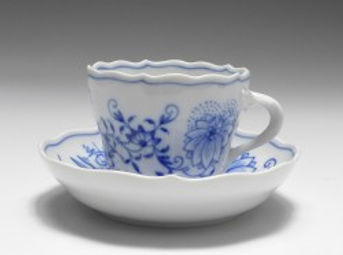<A>
fugal style (fulfilled): *
An early pioneer of this form was Sweelinck (1562-1621). His fantasias (in particular Fantasia chromatic) are among the first organ fugues in which a single theme is subjected to augmentation, diminution & changes of rhythm and combined with counterthemes. His work begins simply, with 1 subject, successively adding texture and complexity until a final climax and resolution, an idea which was perfected at the end of the Baroque era by Bach. He represents the pinnacle in keyboard contrapuntal complexity and refinement before J.S. Bach. Another 17th century pioneer of the fugue was Frescobaldi (1583–1643). Frescobaldi mainly produced keyboard music. The Fiori musicali (1635) is a collection of organ works designed to be played during the mass service. It also features ricercari, a delicate and sophisticated form of musical counterpoint which includes imitative (or fugal) devices. His renowned prowess at the keyboard earned him several important international students, notably Froberger (1616–1667) & Pachelbel (1653–1706). In turn these composers influenced JS Bach (1685–1750), the man who would raise the fugue to prominence. His masterpieces, The Well-Tempered Clavier (1722), The Musical Offering (1747) & Art of the Fugue (1742-49) fulfilled the fugue highest potential. Following his death & with the decline of sophisticated styles in the mid 18th century, the fugue's central role waned, giving way as sonata form while the symphony orchestra rose to a dominant position.
example: Prelude and Fugue No. 1 in C major (BWV 486) from the Art of the Fugue
<B>
functional Analysis (1740): *
The number e is a mathematical constant (often called Euler's number after the Swiss mathematician Euler). It is the base of the natural logarithm: the unique number whose natural logarithm is equal to one. It is approximately equal to 2.71828, and is the limit of (1 + 1/n)n as n approaches infinity, an expression that arises in the study of compound interest. It can also be calculated as the sum of the infinite series (see below):


<C>
four- part movement: *
In the 17th century, for most of the Baroque period, the terms symphony & sinfonia covered a variety of different compositions, including instrumental pieces (for opera), sonatas and concertos—usually part of a larger work. The opera sinfonia or Italian overture had by the 18th century, a standard structure of 3 contrasting movements: fast, slow, fast & dance-like., the direct forerunner of the orchestral symphony. It was during the 18th century that the symphony was developed, used widely in public life, church services & especially performance for the courts & aristocracy (in particular Vienna). The "Italian" style of symphony, often used as overture and entr'acte in opera houses, became a standard 3-movement form (a fast movement, a slow movement, and another fast movement). During the 18th century it became the custom to write 4-movement symphonies though the 3 movement symphony died out slowly. Half of Haydn's first 30 symphonies are in 3 movements; for the young Mozart (under the influence of his friend JC Bach) it was the norm (see his 1787 Prague" Symphony). The new 4 part movement which emerged looked like this:
-
an opening sonata or allegro
-
a slow movement, such as adagio
-
a minuet or scherzo with trio
-
an allegro, rondo, or sonata
<D>
string quartet: *
Haydn is considered the father of the String quartet (as well as the symphony). Below is his String Quartet in B flat Major, op 50 no 1
<E>
violin sonatas: *
In the earliest violin sonatas a bass instrument & harpsichord played a simple bass line (continuo) with the harpsichord doubling the bass line & fixed chords while the violin played independently. The music was contrapuntal with no fixed format. Telemann wrote many such sonatas as did JS Bach who later wrote sonatas with harpsichord obbligato, which freed the keyboard instrument from playing only a bass line accompaniment. Mozart was key in the development of the classical violin sonata, writing no fewer then 36. He wrote mostly 2 movement sonatas, generally a fast movement in sonata form & a second, slower movement in various formats. In his later sonatas he added a third fast movement in various formats. Several of his violin sonatas feature a movement in theme and variation format. Beethoven wrote 10 violin sonatas throughout his composing career. His sonatas matured in both style & complexity; the Ninth (Kreutzer) Sonata is a work of extreme contrasts. A rendition typically lasts forty minutes and is very demanding on both players.
example Mozart vilin sonata
<F>
Porcelain (minor art): *
It was the novelty of the age and factories sprang up in Vienna, Venice and France. The discovery and desire for porcelain ran parallel with the appetites and flagrant and audacious moods in 18th and 19th century society. The desire for the exotic, tea, coffee and chocolate, nurtured the need for new suitable receptacles that were produced in a new exotic material, porcelain. The collecting of porcelain, which was originally the preserve of the Court, was copied by the noble and affluent and so porcelain production was further stimulated by the needs and desires of the higher echelons of society. below examples of such art


